order
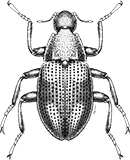
Coleoptera
“Adult Beetles”

Coleoptera
“Larval Beetles”

Diptera
“True Flies”

Ephemeroptera
“Mayflies”

Hemiptera
“True Bugs”

Lepidoptera
“Aquatic Caterpillars, Snout Moths”

Megaloptera
“Alderflies, Dobsonflies, and Fishflies”
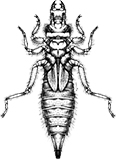
Odonata
“Dragonflies and Damselflies”

Plecoptera
“Stoneflies”

Trichoptera
“Caddisflies”
family
Limnephilidae
Pycnopsyche
“Northern Casemaker Caddisflies”
Genus Overview
Pycnopsyche includes about 18 species, mostly from eastern North America. Larvae can be relatively large, up to 29 mm. The case may be made of plant or rock material, often a combination of the two. Species in this genus tend to prefer cool shaded streams, or small rivers, typically in wooded areas. Larvae are scrapers and shredding detritivores, ecologically important for breaking down leaf litter in the stream throughout the fall and winter. Larvae can be identified by the following characters: abdominal segment I with one tall vertical tear-drop-shaped sclerite at posterior edge of base of each lateral hump, almost as tall as hump. Abdominal gills mostly single. Chloride epithelia, each recognizable as oval region outlined with very fine dark line, are present only on abdominal sterna III–VII.
Characteristics
POLLUTION TOLERANCE
Southeast: 2.5
Upper Midwest: 4
Midwest: 3.3
Mid-Atlantic: 4
0 = least tolerant, 10 = most tolerant
FEEDING HABITS
Scraper / Grazer
Shredder / Detritivore
Shredder / Detritivore
MOVEMENT
Climber
Clinger
Sprawler
Clinger
Sprawler
DISTRIBUTION
Widespread (east of the Rocky Mtns.)
HABITAT
Lentic-littoral
Lotic-depositional
Lotic-erosional
Lotic-depositional
Lotic-erosional
Diagnostic Characters
order
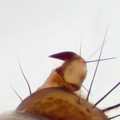
Prolegs With Single Hook
family
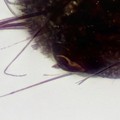
Antenna Between Mandibles and Eyes
genus
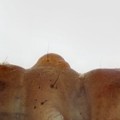
Tall Sclerite At Base Of Lateral Hump
+ Expanded Character List
Order:
Larvae: Wings/wing pads absent. Eye spots present, but compound eyes absent. Antennae usually small, inconspicuous. Three pairs of segmented legs present on thorax. Pair of anal prolegs, each with single hook, located on last abdominal segment. Larvae can be free-living, in silken retreats attached to substrate, or in usually-portable tubes or cases made of sand, rocks, or plant material.
Family:
As in all families of superfamily Limnephiloidea, short, inconspicuous antennae are each located about midway between base of mandible and eye. Prosternal horn usually present. Chloride epithelia usually present on at least some abdominal segments. Otherwise distinguished from other Limnephiloidea families as follows: Mandibles usually toothed and setae usually absent between anterodorsal (sa1) sclerites or, if present then fewer than 25 setae (unlike Apataniidae). Mesonotum not notched along anterior margin (unlike Thremmatidae). Mesopleura not expanded as in Goeridae. Larvae usually large when mature and building tubular cases of varying materials, usually rocks or rough plant materials. Mature larvae 6–30 mm.
Genus:
Mesonotum with sclerotized plates each about as long as wide. Metanotal sa1 sclerites not fused although often touching. Abdominal segment I with one tall vertical tear-drop-shaped sclerite at posterior edge of base of each lateral hump, almost as tall as hump. Abdominal gills mostly single. Chloride epithelia are present only on abdominal sterna III–VII. Abdominal tergum IX with only one hair on each side of sclerite. Case a tube of rock fragments or plant materials, variously constructed, sometimes 3-sided in earlier instars.
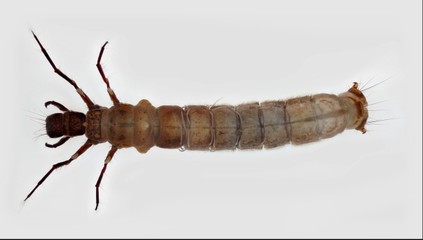

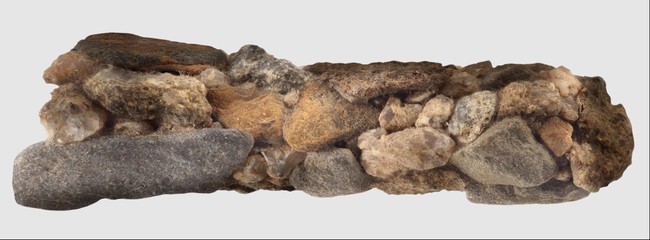
Dorsal
Ventral
Case




